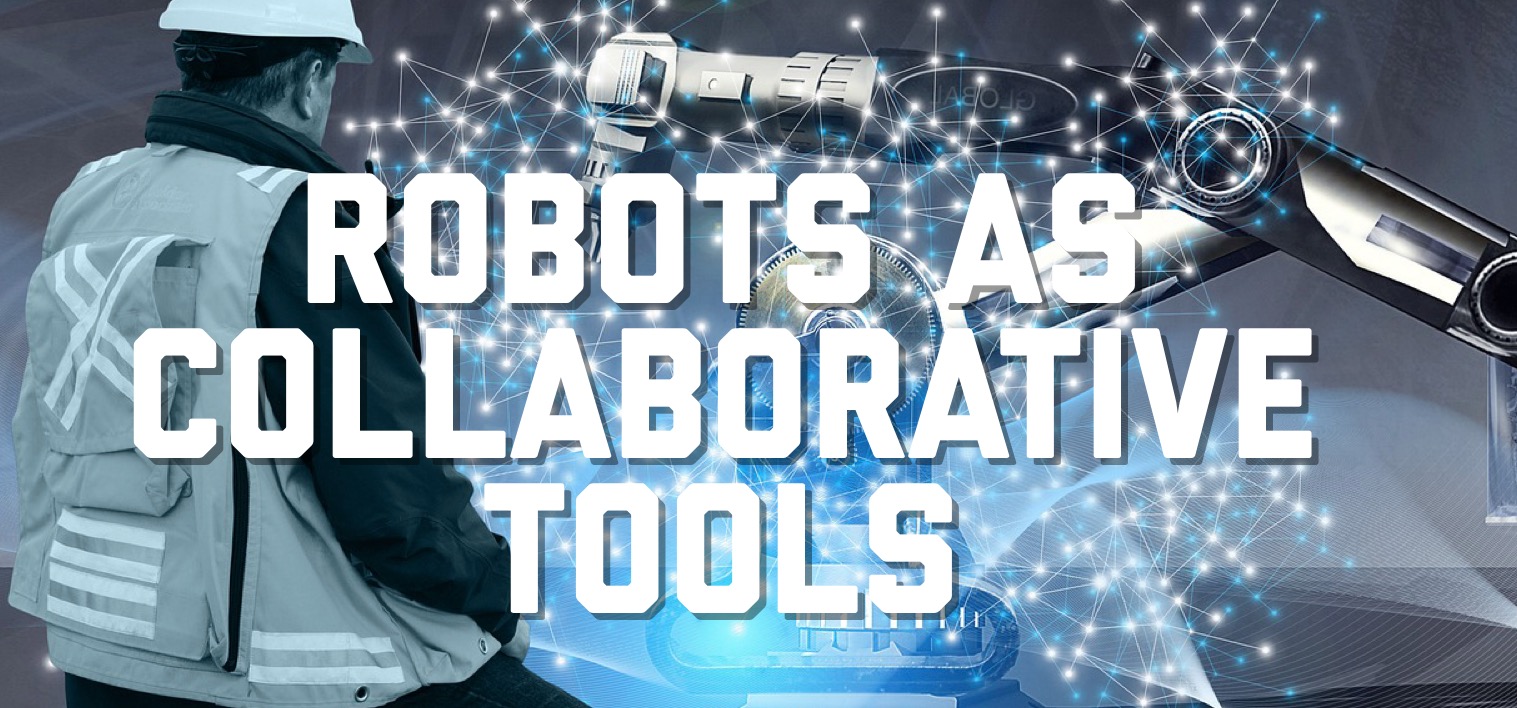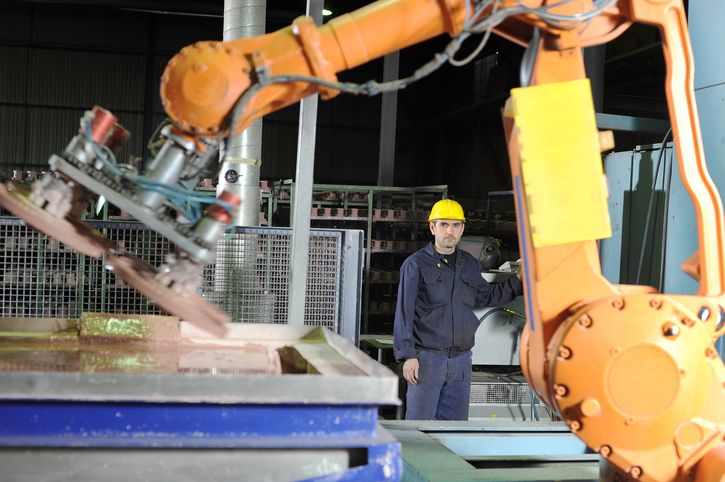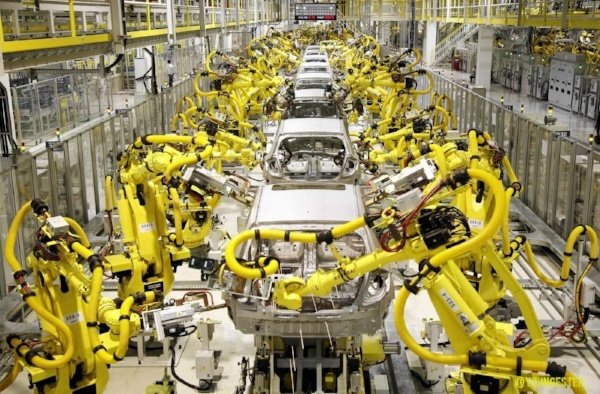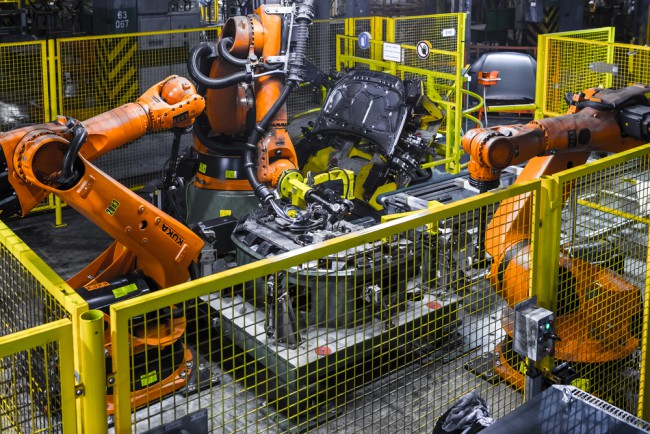An Emphasis on Robots as Collaborative Tools
5 October, 2020 | Industrial Manufacturing, Engineering, Automation, Robots, Cobots

Collaborative robots (cobots) are leaving their mark on the rapidly evolving technological side of the industrial landscape. Particularly, automation and manufacturing industry can come to rely deeply on the collaboration between robots and humans as they work together to achieve shared goals. Cobots provide a safe, scalable and easy-to-use automation support for human workers in the manufacturing industry. Their use as a collaborative tool boosts the working conditions and enables the humans to work more effectively and possibly achieve a higher level of job satisfaction. Cobots are being used as collaborative tools in many industries and with the advent of industry 5.0, they are definitely here to stay. The Cobot ‘intervention’ may prove to be a really good thing for the future of manufacturing, let’s see how:

Meeting the massive manufacturing demands
Shortage of labour is one of the very real issues faced by the manufacturers and it directly affects their profits and ability to expand their businesses. Cobots can solve this problem by taking on the mundane tasks like packaging, assembling, machine tending and even processing. This collaborative system can help manufacturing businesses realize their full potential. Furthermore, since cobots are basically ‘machines’ they can easily handle the ‘roughness’ involved in some tasks like the back-force exerted during actuation. Cobots are capable of performing tasks where force feedback is integral to achieving consistent outcomes and repeatability. All in all, human-robot collaboration can improve the manufacturing quality as well as the quantity.

Reducing complexity and difficulty level of different tasks
The robot technology has come a long way and with advanced programming techniques like teach pendant, programming cobots has never been easier. Companies don't have to waste time and money writing complex programming scripts. Cobots are different from your run-of-the-mill robotic automation technology. They are intelligent, mobile and designed to fully work in harmony with the humans. Most of the modern cobots are equipped with state of art sensors and visions systems that allow for easy adaptation to the surrounding environment. Their presence can reduce accidents and create a safe working environment for humans. More cumbersome and difficult tasks are taken on by these cobots and humans are left with the charge of important decision making and overseeing tasks. With cobots, people can achieve higher efficiencies and can rapidly increase productivity.
Increasing job satisfaction of workers
Cobots are eliminating mundane tasks that are dirty, dangerous or require major ‘heavy lifting’. More financially sound and mentally rewarding jobs are now being created for humans. Working in collaboration with cobots is a satisfactory, high-value and rewarding experience as compared to the dull, repetitive menial tasks that were allocated to humans before the advent of the cobot technology.

Return on investment (ROI)
With the installation of cobots, industry becomes more effective, more versatile and more profitable. Higher ROI is also automatically assured. Cobots can easily be put anywhere and moved when necessary, which effectively contributes to the reduction of non-productive activities in production hours. According to a research conducted at MIT, using robots as collaborative tools can reduce the human idle time by as much as 85%. Furthermore, repair costs are reduced and a greater profit margin is generated.
The future of collaborative robots
A report from Interact Analysis estimated that the cobot market will be $7.5 billion by 2027. This represents approximately 29% of the global industrial robot market. Human-robot partnership is a daily reality for thousands of employees in the Amazon fulfilment centres in the US. They use over 100,000 cobots in logistics that operate side by side with the humans and improve the overall productivity. According to Amazon, 300,000 new jobs have been generated by their cobots since 2012. There is no question that much of the work that people do today will be performed tomorrow by robots. However, collaborative robotics prove that automation can also free people from tedious activities that most people never want to do and build more interesting and enriching work.
The technology is evolving rapidly and we will soon see human-robot collaboration on more complex tasks as interactivity and collaboration level of cobots rises.
- Call: 1-888-551-3082
- International: 1-919-443-0207
- Fax: 1-919-867-6204
- Email: sales@wakeindustrial.com
- Address:
- 1620 Old Apex Rd
- Cary, NC 27513










